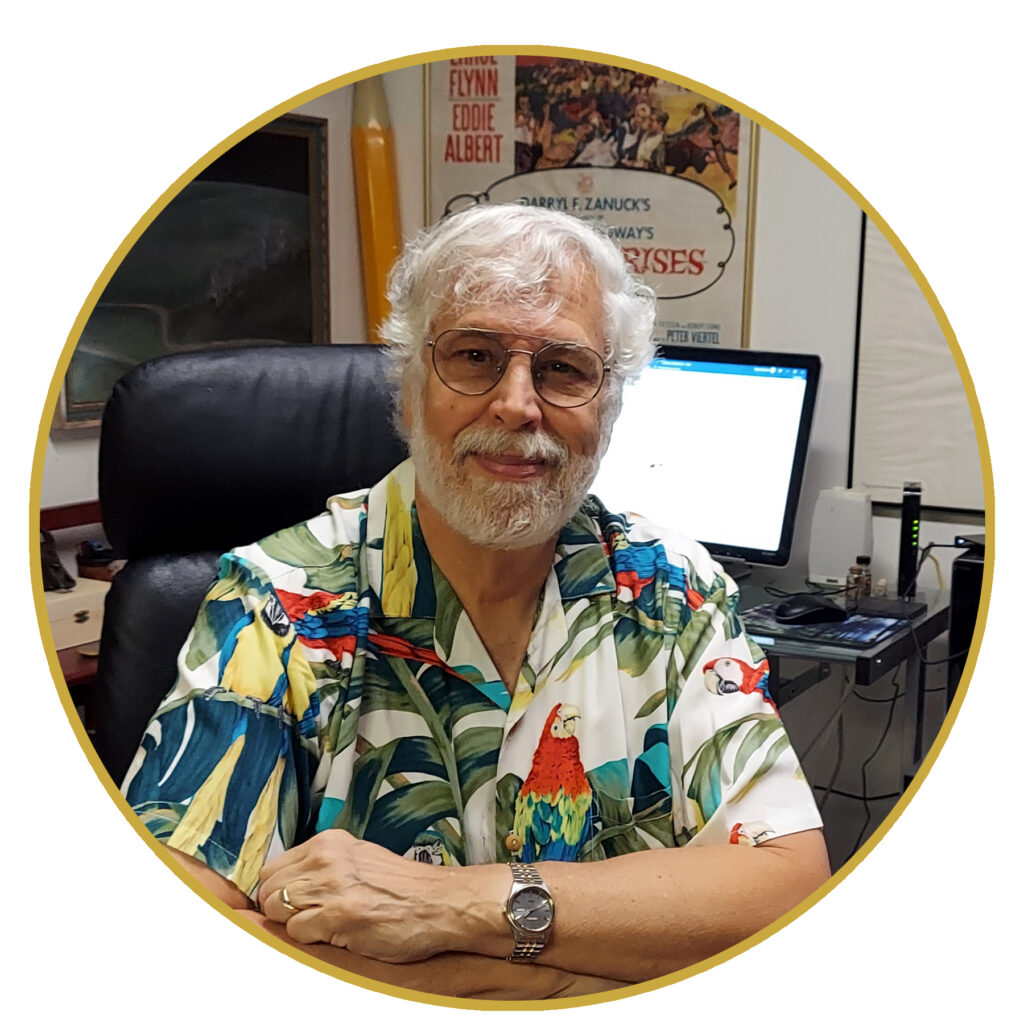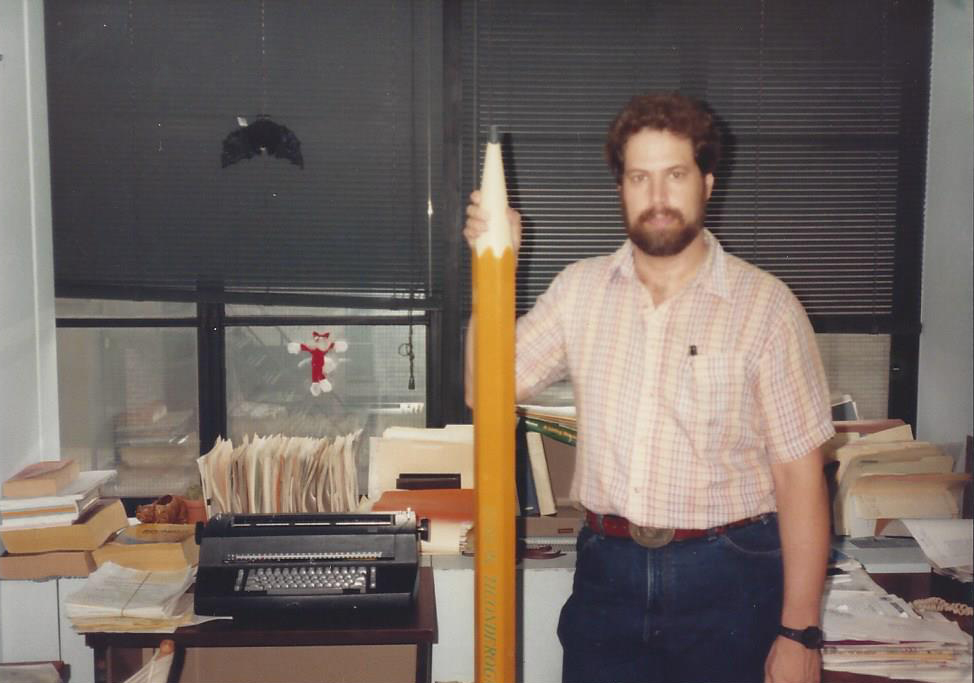let's say hello
Origins

In Old New York
As a child in the Bronx, I was always going to movies with my mother. Double features in those days, at the Square Theater in Westchester Square, or at the RKO on Castle Hill Avenue, or the Interboro Theater out on Tremont on the way to Throggs Neck. Terrible movies that seemed wonderful to a child—The Deadly Mantis, The Incredible Shrinking Man, various Hammer Studios vampire and Frankenstein films, Rodan, and The She Creature, a movie so bad that even I knew it was bad. But there were good, even great, films, too: Giant, Rebel without a Cause, Moby Dick, Damn Yankees, various westerns, especially The Last Hunt. Now, when I watch old films on TV, I seem to have seen all of them.
On TV, in our apartment off Westchester Square, with its fragrant fish market, sawdust on the floor, and the bank with huge murals of early New York history, Indians meeting colonists, there was Fury, Spin and Marty, Corky and White Shadow, Rin Tin Tin, The Ray Forest Hour with its grainy, black-and-white animal segments that I loved, Ramar of the Jungle, Lassie, and some shows I watched but wasn’t too crazy about – Annie Oakley, Sky King, The Cisco Kid, Wild Bill Hickok. Where have all the cowboys gone?
My favorite was Roy Rogers, who, as anyone my age can tell you, was tops. For a while I had my mother introduce me to strangers as Roy Rogers, and I wore the guns and white hat, the neckerchief. I wanted a palomino of my own, like Roy’s horse Trigger. What boy didn’t? Probably the boys who liked Sky King.
I started writing short stories when I was about 8. Those stories were suspiciously like Rodan, and sometimes ended with the application of an atomic bomb—then all the rage—to my monster.
Go West, Young Man
We moved to Omaha, Nebraska, when I was 11. I knew I would miss Long Island Sound, but other than that, I was happy to go. I knew Omaha well. My father was from the Bronx, my mother was from Omaha, Nebraska, and when I was a child, my mother and I spent every summer with her parents in Omaha, a trip I looked forward to all year. It meant grassy yards and birds in tall trees, it meant the whispering buzz of cicadas as day cooled into evening, and riding horses here and there. When we went home at the end of each summer, I would cry as we boarded the train and for quite some time after the train left the station.
One of the best things about Nebraska proved to be the Sandhills—hundreds of square miles of open, rolling grasslands in the western reaches of the state, where I spent many weeks in my teens on a cattle ranch near the town of Mullen, in Hooker County (the ranch was about 35 miles northwest, in Cherry County). In Omaha I grew up, went to college to be a zoologist, wanted to write, served two years in the Army at the Letterman Army Institute of Research at the Presidio in San Francisco (the Pacific Front, as I called it), got a master’s in zoology, worked two years as a curator in a small but elegant private zoo, started writing fiction, went to Oklahoma to work on a doctorate in zoology but quit going to my zoology classes so I could audit a class in writing novels, and at the end of the semester enrolled in the journalism department and got a second master’s in journalism, specializing in news gathering and fiction, something the journalism school taught. Commercial fiction.
"A few years ago, a Swedish website named me as one of the founding fathers of Swedish fantasy fiction. I never met the mother."
At Work
My journalism career started when I wrote and edited for a couple weekly newspapers, then worked as a writer and editor for the Oklahoma Department of Wildlife Conservation in Oklahoma City. Later, I edited and wrote for Defenders, the magazine of Defenders of Wildlife, in Washington, D.C.; the Audubon Wildlife Reports and Audubon magazine, publications of the National Audubon Society, in New York City; and BioScience, the magazine of the American Institute of Biological Sciences. I also worked in film production for the Audubon Television Department, where I helped produce a made-for-TV movie on elephant poaching that starred James Earl Jones, John Lithgow, and Isabella Rossellini. I spent a total of fourteen years as a senior editor for National Wildlife, the flagship publication of the National Wildlife Federation, with nearly 800,000 subscribers at its peak during my time there. I also served as senior director of communications for the National Park Conservation Association for nearly four years and spent a professionally satisfying year writing grant proposals for major donors at the National Park Foundation before giving up my day job.
I have published ten books, most recently Theodore Roosevelt in the Badlands: A Young Politician’s Quest for Recovery in the American West. I have promoted four of my books on television and radio. I have appeared on Good Morning America, CBS Nightwatch, C-Span, CNN, Canada AM, and other programs. I also have appeared on nearly 100 radio programs, including Diane Rehm and Larry King Live, with guest host Jim Bohannon.
As a child I was fascinated with Rudyard Kipling’s Mowgli stories, about a boy raised by wolves. As an adult, I wrote a novel about a man who turns into a wolf. It was a humor-driven book about one man’s attempt to cope in the modern world with the ancient disease of lycanthrope. Ursula’s Gift was subsequently published in Sweden as Werewolf Death! (I can’t guarantee that my translation of the Swedish title, Varvulens Tid!, is correct, but I think it is). A few years ago, a Swedish website named me as one of the founding fathers of Swedish fantasy fiction. I never met the mother.
In Germany the novel was called Werwolfen Küssen Gut, which I translate loosely as Werewolves Are Good Kissers. A German musical comedy play based on the novel was called Fletsch. My favorite song on the soundtrack is “Werewolf Blues.”
After Ursula I wrote a novel about time travel and about how you have to do the right thing even if it means creating a world you personally don’t much care for. It was called Living with the Reptiles. You can still find used copies on Amazon. Same goes for Ursula.
how did i get here?
big edits require a big pencil...

At my Audubon office in New York City, big edits required a big pencil. Do you have a big idea about wildlife conservation? Let’s talk.